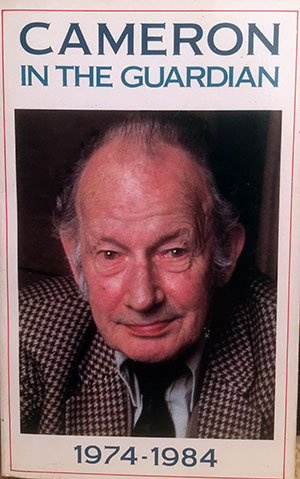Review of Paul Hogarth’s ‘Looking at China’…..
 I was delighted to finally obtain a copy of Paul Hogarth’s third book Looking at China. First published in the UK in 1956 by Lawrence & Wishart Ltd this was a fascinating chronicle of Chinese life by the first British artist to visit China since the Second World War.
I was delighted to finally obtain a copy of Paul Hogarth’s third book Looking at China. First published in the UK in 1956 by Lawrence & Wishart Ltd this was a fascinating chronicle of Chinese life by the first British artist to visit China since the Second World War.
In what was an epic journey of thousands of miles, Hogarth, accompanied by a young Chinese artist began his journey in Moscow where he drew the Kremlin churches from a view point across the Moscow River, he describes the interest of Soviet workers in his drawings and how one encouraged him to feature his children playing.
He took the early morning flight to Peking via Novosibirsk where he visited the airport restaurant: ‘An enormous meal was served by short-skirted waitresses with the hair-styles and high heels of the 1940s. An hour passed and we filed back through gardens in which plaster figures of Lenin and Stalin emerged like ghosts from the dense shrubbery’ Hogarth immediately draws us into the period, he paints, quite literally, a vivid scene and sense of place. How exciting it must have felt to be given the opportunity to visit the Soviet Union and more especially, 1950s China when so few Westerners could.
 Hogarth gives thanks to the British Council and British-China Friendship Association to facilitate his travels as well as the gloriously Chinese titled, Chinese People’s Association for Cultural Relations with Foreign Countries, it cannot have been easy to arrange such a trip and it shows the importance of culture in society to overcome political obstructions.
Hogarth gives thanks to the British Council and British-China Friendship Association to facilitate his travels as well as the gloriously Chinese titled, Chinese People’s Association for Cultural Relations with Foreign Countries, it cannot have been easy to arrange such a trip and it shows the importance of culture in society to overcome political obstructions.
The first sketch above is of a fish market where Hogarth ‘prowled around bazars and markets where flies no longer dared to live, and revived the half-forgotten sensations of childhood looking at great bowls of goldfish, fur hats and ear cleaning outfits’ The author takes us on a journey through the crowded streets of Peking, the curiosity felt by the locals is clear and the scenery presents Hogarth with a multitude of artistic opportunities including the Summer Palace ‘too Chinese to be real‘.
 Hogarth loved to draw people, he was a master of it and the book is full of studies of the Chinese people in their everyday lives, Hogarth believed people added life to landscapes and nobody did it better. What the reader must be aware of is the date of this book, Hogarth’s observations of the Chinese workers do not reflect the cruelty which millions endured during Mao’s insane push to make China the greatest industrial nation on earth. Perhaps he was influenced by those who guided him or his socialist leanings, but the deaths and misery of China’s millions under Mao will have doubtless had a subsequent dramatic effect on the artist as well as those in the West who had no understanding of the depths of human suffering that nation endured. Hogarth tells us how the Chairman of a mutual aid team informs his that everyone’s income had risen by a third in three years, Hogarth wrote; ‘The poorest of the poor had come into their own’. But one must remember a visitor can only see what he is allowed to be shown, we now know the workers would have been instructed on how to act in front of a Westerner and how both the Soviet Union and China managed to cover up their bitter quarrels for years.
Hogarth loved to draw people, he was a master of it and the book is full of studies of the Chinese people in their everyday lives, Hogarth believed people added life to landscapes and nobody did it better. What the reader must be aware of is the date of this book, Hogarth’s observations of the Chinese workers do not reflect the cruelty which millions endured during Mao’s insane push to make China the greatest industrial nation on earth. Perhaps he was influenced by those who guided him or his socialist leanings, but the deaths and misery of China’s millions under Mao will have doubtless had a subsequent dramatic effect on the artist as well as those in the West who had no understanding of the depths of human suffering that nation endured. Hogarth tells us how the Chairman of a mutual aid team informs his that everyone’s income had risen by a third in three years, Hogarth wrote; ‘The poorest of the poor had come into their own’. But one must remember a visitor can only see what he is allowed to be shown, we now know the workers would have been instructed on how to act in front of a Westerner and how both the Soviet Union and China managed to cover up their bitter quarrels for years.
 Hogarth’s journey across China also took in the stunning Yangtse River and where the lesser Kilang merged into its great water. Here he observed and drew junks being built, river-steamers unloading supplies, men carrying great bales of straw on bamboo poles, the industrial revolution was slow to reach all parts, man-handling was a given along with a short and back-breaking life expectancy; ‘The next morning Ho and I sat on the Yangtse’s southern bank, watching the boatmen haul the great junks across the cross-currents of the two rivers. Repin’s Volga Boatmen was the sort of picture; the hauling done with great swinging ropes against which the men strained with bent heads and dangling arms, chanting a chorus which somehow was not pleasant to hear’
Hogarth’s journey across China also took in the stunning Yangtse River and where the lesser Kilang merged into its great water. Here he observed and drew junks being built, river-steamers unloading supplies, men carrying great bales of straw on bamboo poles, the industrial revolution was slow to reach all parts, man-handling was a given along with a short and back-breaking life expectancy; ‘The next morning Ho and I sat on the Yangtse’s southern bank, watching the boatmen haul the great junks across the cross-currents of the two rivers. Repin’s Volga Boatmen was the sort of picture; the hauling done with great swinging ropes against which the men strained with bent heads and dangling arms, chanting a chorus which somehow was not pleasant to hear’
 This is a wonderful book, it contains some of the artist’s best pencil and pen drawings in my opinion, the accompanying text is essential reading for travel lovers and it is a pleasant, tempered look at an emerging China in the early fifties. Hogarth was very fortunate to be given the opportunity to capture these moments but thank god that he did and it is a fine addition to his incredible body of work.
This is a wonderful book, it contains some of the artist’s best pencil and pen drawings in my opinion, the accompanying text is essential reading for travel lovers and it is a pleasant, tempered look at an emerging China in the early fifties. Hogarth was very fortunate to be given the opportunity to capture these moments but thank god that he did and it is a fine addition to his incredible body of work.
Paul Hogarth’s bibliography and more information about the artist can be found here
Categories: Paul Hogarth, The Reading Room







Reblogged this on Ancient Worlds and commented:
As we explore content for the new Lee Kai Hung Gallery of Chinese Culture @McrMuseum #MMChina opening in 2021 we are really interested in reproducing some of Hogarth’s sketches – many of which capture the dignity of Chinese people in everyday scenes – to help stimulate a sense of empathy in our visitors and so build understanding between different peoples and cultures. Last week in my capacity as a recipient of a Headley Trust Fellowship with the Art Fund @artfund I consulted the Paul Hogarth archive at Manchester Metropolitan University. This has some correspondence from the time and cards and publicity material for the exhibition at the Leicester galleries in London. So it was great to see this blog and reproductions of some of Hogarth’s works in China.
LikeLiked by 1 person
A wonderful comment Bryan, so pleased you found it of interest. The project sounds fascinating and I wish you the best of luck with it. Will take a look at your site and look forward to hearing more about the material.
Kind regards.
LikeLike